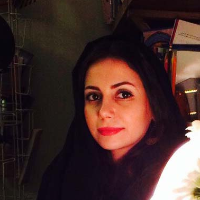The effect of environment and behavior synomorph based on the type of activity selected in urban space
Urban space is like a living thing that affects the behavior of participants and is also influenced by their behavior, whether it affects the body or the meaning of the space. The importance of this issue has laid the foundation of environmental psychology, so that it has attracted the attention of designers and urban planners to the application of the basic components of this branch of psychology in the design of urban spaces and public open environments. The purpose of this study is to investigate the effect of environment and behavior synomorph on the type of activity of users. The case study was Enghelab Street as an urban space has a historical background and a trans-regional functional scale was located in center of Tehran is suitable for examining patterns of environmental psychology, types of activities and their behaviors, as well as suggestions from field studies conducted.
This research is a descriptive-analytical research based on the basic-applied purpose. In data collection, quantitative-qualitative method was performed using exploratory studies and questionnaire analysis with SPSS software and analysis (version 22.0).
The growing number of participants respectively, make use of this space for compulsory, social, and optional activities. According to the required activities such as roundtrip time from work, most periods are between 7 to 11 a.m. after 6 to 9 p.m. The results obtained from the implementation of the Kruskal-Wallis test on the data show that the use of sample space for doing purpose compulsory, optional, and social activities is of equal importance in the sense that designing urban space following behavior and need is equally important among the users of space who choose with different purposes of social, optional, and compulsory activities. In more detail, the differences in the indicators were in the intimacy component (Sig: 0.024).
These findings may provide that it is not important in what propose person use the place, the quality of urban place should be presented in the design of all public spaces of the city.
-
Examining the Impact of Seasonal Changes on Embodied Perception Capabilities and Behavior: A Case Study of Darakeh, Tehran
Saeed Sharifkazemi, Farah Habib *, Maryam Ghalambor Dezfuly
Bagh-e Nazar, May 2025 -
Developing a Model for Measuring the Soundscape Quality in an Urban Context Based on Contextualism Using Matrices
Mitra Maleki Eshlaghi, Maryam Ghalambor Dezfuly *
MANZAR, -
Investigating the Role of Urban Landscaping in the Perception of Collective Spaces Using Perceptual Potentials (Case study: Third Square of Tehranpars)
Saeed Sharif kazemi*, Haleh Hosseinpour
International Journal of Architecture and Urban Development, Summer 2021




